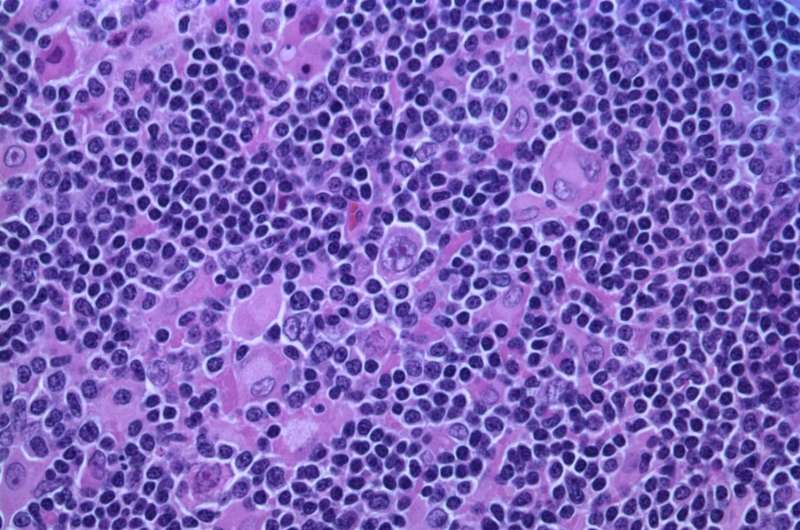
Patients with early relapsed or refractory large B-cell lymphoma had significantly improved overall survival when treated with the chimeric antigen receptor (CAR) T cell therapy axicabtagene ciloleucel (axi-cel) when compared to the current standard-of-care chemoimmunotherapy, according to results of the Phase III ZUMA-7 trial reported by researchers from The University of Texas MD Anderson Cancer Center.
Data from the study were presented today by Jason Westin, M.D., director of clinical research in the Department of Lymphoma and Myeloma, at the 2023 American Society of Clinical Oncology (ASCO) Annual Meeting and published concurrently in the New England Journal of Medicine.
At a median follow-up of 47.2 months, axi-cel demonstrated a statistically significant improvement in overall survival (OS) over standard therapy. The median OS had not yet been reached for axi-cel, meaning more than half of the patients remained alive at the time of this analysis, compared to a median OS of 31.1 months on the control arm. The estimated four-year survival rate was 54.6% with axi-cel and 46% with standard care, corresponding to a 27.4% reduction in the risk of death with the cell therapy.
“This is the first randomized Phase III trial in nearly 30 years to improve overall survival with second-line curative therapy for patients with aggressive lymphoma. High-dose chemotherapy and stem cell transplant, the old standard, cured a small portion of patients but resulted in side effects for all,” Westin said. “The quality of life for patients treated with axi-cel improved faster than those treated with chemotherapy, and our results support axi-cel as a second-line treatment for these patients.”
B-cell lymphoma is a type of non-Hodgkin lymphoma that originates in the B cells. According to the American Cancer Society, B-cell lymphomas account for approximately 85% of all lymphomas in the U.S. Diffuse large B-cell lymphoma is the most common, with nearly 30,000 people across the country newly diagnosed each year.
Axi-cel was approved by the Food and Drug Administration in 2017 for the treatment of specific patients with B-cell lymphomas, and ongoing studies continue to evaluate the benefits of this therapy relative to current standard approaches.
The international ZUMA-7 trial included 359 patients who were refractory or relapsed within one year of completing first-line therapy. Patients were randomized to receive either axi-cel, an autologous anti-CD19 CAR T cell therapy, or standard of care, which consists of two to three cycles of chemoimmunotherapy followed by high-dose chemotherapy with autologous stem-cell transplantation in responding patients.
Patients receiving axi-cel achieved a median progression-free survival (PFS) of 14.7 months versus 3.7 months with standard therapy, with an estimated four-year PFS rate of 41.8% versus 24.4% with standard therapy. The OS and PFS benefits favoring axi-cel were consistent across all key patient subgroups.
The safety of axi-cel was manageable and consistent with previous trials. In those treated with axi-cel, grade 3 cytokine release syndrome occurred in 6% of patients and grade 3 or higher neurologic events occurred in 21% of patients, as reported in the primary event-free survival analysis. No new cytokine release syndrome events were recorded.
“On this groundbreaking trial, more patients lived longer with axi-cel compared to the standard treatment. This is the first trial in any cancer type where a CAR T cell therapy improved survival versus older chemotherapy. This is an incredible breakthrough, but we continue to work to learn where else CAR T cell therapy can prove to be superior in treating patients with high-risk B-cell lymphoma,” Westin said. “We currently are enrolling patients in a study in first-line therapy, the ZUMA-23 clinical trial, to evaluate axi-cel compared with chemotherapy.”
More information:
Jason R. Westin et al, Survival with Axicabtagene Ciloleucel in Large B-Cell Lymphoma, New England Journal of Medicine (2023). DOI: 10.1056/NEJMoa2301665
Journal information:
New England Journal of Medicine
Source: Read Full Article
